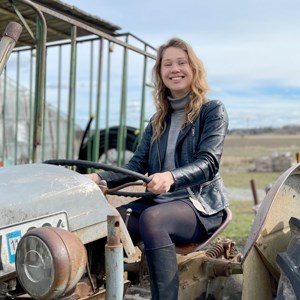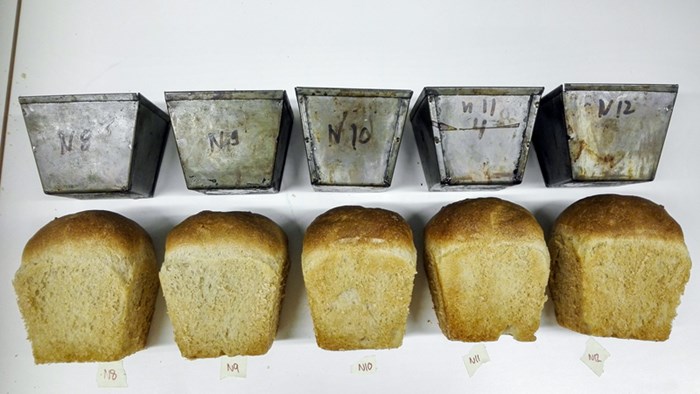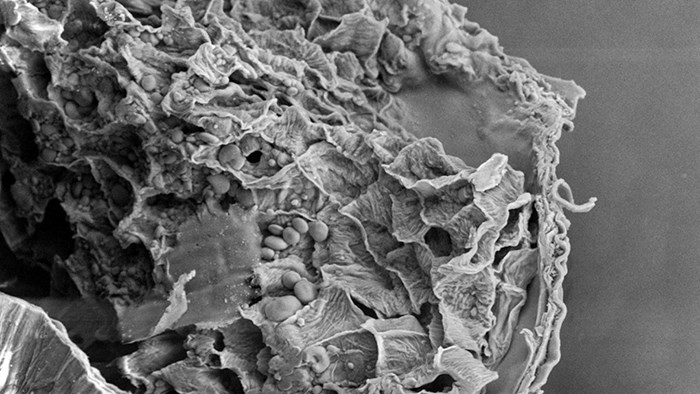Wheat bran is a major agro-industrial by-product of flour milling. It is currently used mainly for animal feed and bioenergy production even though it contains large amount of nutrients. In her PhD project, Solja Pietiäinen is investigating how wheat bran can be processed into food ingredients.
– I really fell in love with this project because it has so much potential to create positive change and improve health and sustainability of food production. If we are able to utilize this huge side stream as a functional food ingredient, it will increase the sustainability of cereal production, and benefit everyone from wheat farmers to bakeries and consumers, says Solja.
Solja is originally from Helsinki and has done her MSc in Food Science at Helsinki University. She was working as a procurement coordinator for a Finnish bakery owned by Lantmännen when she saw the internal announcement for this position.
– I am pretty value driven and had majored in grain technology, so this project focusing on sustainability of cereal processing felt perfect for me!
Extracting compounds important for baking properties and longer shelf life
The aim of Solja’s PhD project is to fractionate wheat bran on industrial scale and extract the compound arabinoxylan with different properties. Arabinoxylan is an abundant hemicellulose in wheat bran and an important component in baked products. The compound can provide functional properties in various foods, such as better baking properties and longer shelf life in bread. Arabinoxylan could also potentially have health-promoting properties in the gastrointestinal tract.
Baking trials for optimal bread quality
Solja is part of SLU’s industrial PhD students in the program LivsID and her project is funded by Stiftelsen för Strategisk Forskning (SSF).
– I am now two years into the project. During this time, I have focused on optimizing wheat bran pretreatment for arabinoxylan extraction, especially in terms of an alternative pretreatment called pulsed electric field. We have also started baking trials to investigate the effect of arabinoxylan structure on bread quality.
Fun but tricky
Have you encountered any problems in the project?
– Working with bread is a lot of fun, but bread is also such a complex food system that correlating ingredient structure with application functionality has proven to be tricky. Everything from baker to time of the year seems to affect the results. This means that I will get to return to the baking lab to create some complementary data for the existing results.
Now, Solja will continue the baking trials but also start working with simpler model systems to better understand the structure-property relationship between arabinoxylan and bread quality.
High-fiber products with better quality and less food waste
Extracted arabinoxylan is anticipated to provide functional properties in various foods, such as better baking properties, and longer shelf life in bread.
– This will help to create high-fiber food products with better sensory quality and reduce the amount of food waste. Nutritionally beneficial components of wheat bran that we are now losing in milling to feed and bioenergy production will be brought back to human consumption, which could hopefully translate into higher dietary fiber intake. Using bran for food productions will also increase the value of this previously low-cost side stream.
A future at Lantmännen?
– I have been very impressed to see how much effort Lantmännen puts into sustainability and research, and I would gladly see myself continuing to build my career with them also after my dissertation.
A dancer interested in food production
What are you doing when you are not working?
– When I am not working, I am most probably training dance and aerial acrobatics. I am lucky enough to have my own little dance studio in an old barn, which makes training possible even during this pandemic. I am also very interested in food production and looking forward learning more about vegetable growing this year.



